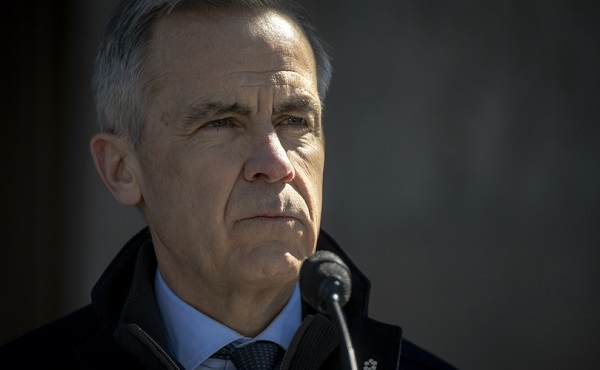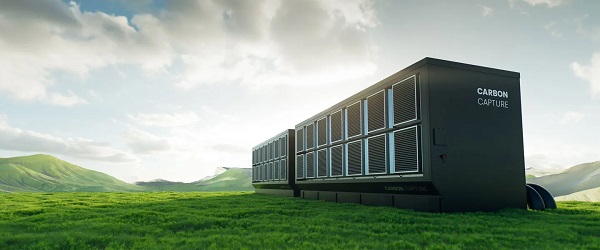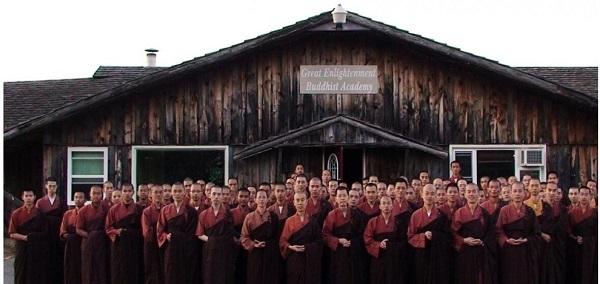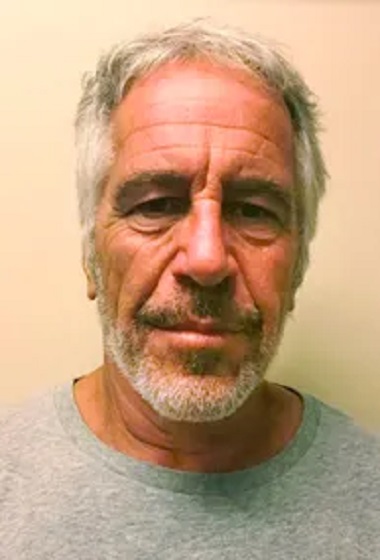Business
Canadians have surrendered complete control to Mark Carney

From LifeSiteNews
Bill C-5 can be accurately and fairly described as Mark Carney’s grab for power in Canada. Here’s why.
Mark Carney operates as a banker and corporate leader, not as prime minister. We saw this in blazing technicolor when he brought forward Bill C-5, passed in the House of Commons on the 20th of June and rubber stamped without any amendments by the Trudeau-appointed Senate on June 26, 2025.
Ignoring Parliament
The manner with which this bill was passed indicates that Carney does not waste his precious time on such trivialities and nonessentials as Parliamentary procedures. Parliamentary debate, and parliamentary committee scrutiny were eliminated in the hurry to pass Bill C-5. Only one-and-a-half days were allotted for the committee’s review. Usually, a committee takes several months to review a bill. In the brief time the bill was before the committee, there was scarcely enough time to set up the committee, let alone examine the bill.
There was no public input allowed. Indigenous groups were especially alarmed that they were ignored since the bill could impact significantly on their interests. Carney whipped aside such inconsequential procedures because he knows best and expects only applause from his complacent personally selected cabinet who would not dare make even a suggestion about Carney’s extravagant plan.
Rule by cabinet
This bill can be accurately and fairly described as Carney’s grab for power in Canada. This is because the Act provides Carney and his cabinet with the power to fast-track major national projects to come into effect within a two-year period rather than a customary five-year period. The Act provides that Carney can do so by way of Orders-in-Council (defined as a law made by a person or body who has been granted (delegated) law-making authority) by removing any laws that may impede the project which Carney has designated as being in the national interest. In fact Bill C-5 makes the supposed national interest into Carney’s self-interest, since he will be the only one deciding which projects will be chosen.
The use of Orders-in-Council, which in effect, makes laws by regulation, only requires cabinet approval and bypasses Parliament. That is, the use of regulations provided by Orders-in-Council (which regulations have not yet been written), constitutes a huge shift of power away from Parliament to Cabinet and the Prime Minister’s office. The Orders-in-Council strike at the very foundation of Parliament, which is the ability to make laws. Also, it avoids Parliamentary scrutiny, fundamental to democracy. In a Parliamentary democracy, the legitimacy of laws is derived from the consent of the governed, through Parliament, whose members are elected by the public. Delegating legislation by regulation seriously weakens this fundamental principle.
Further, under Bill C-5, Carney has the power to suspend by Orders-in-Council any federal laws that may apply to his projects. This would include dispensing with conflict-of-interest laws, the Access to Information Act, any review by the Auditor General, even preventing police action by eliminating the provisions of the Criminal Code.
Labour mobility is a provincial matter
Bill C-5 consists of two Acts together. The first is the “Free Trade and Labour Mobility Canada Act”. This Act is useless and meaningless since labour mobility falls solely under provincial jurisdiction, and the federal government has no authority to deal with this issue. In addition, the regulations governing professions and unions such as legal, medical, accounting, social services, and trades, etc. fall strictly under provincial jurisdiction. Also, they exist to protect a particular profession or trade’s turf or rights, supposedly in the public interest.
The reality, however, is that the provincial labour mobility barriers on professions and trades exist as much to keep out people in a particular field, in order to protect that profession or trade in that province. If this were not the case, many individuals might choose not to remain in a high tax jurisdiction such as Quebec or Ontario, but would, instead, move to provinces with lower tax rates such as Alberta or Saskatchewan. The provincial trade barriers also protect provincial industries such as breweries and wineries, which the provinces want to protect from competition outside the province.
The real power in Bill C-5
The real power of Bill C-5 is the “Building Canada Act”. It is designed to allow Carney to handpick and facilitate the building of expensive, wasteful, environmentally harmful and inefficient solar and wind projects. These projects will not solve any supposed “climate crisis” or energy shortages but rather will enrich the private consortiums that Carney is all too comfortable with. As such, the bill’s passage is another huge slap in the face not only to the West but to all of Canada. Carney’s Minister of Environment, Julie Dabrusin, stated in the National Post on July 5, 2025, that “the environment remains a priority for Prime Minister Mark Carney” as his government prepares to fast track major projects.
Essentially, the cabinet, which means Carney, is free to decide which projects will be “in the national interest”. Some grand and glorious projects have already been floated. This includes constructing an economic corridor connecting BC’s north-west coast, through the Prairies to Hudson Bay, and eventually linking it by road to an Arctic port in Grays Bay, Nunavut. Other ideas include port-to-port infrastructures including roads, rail, power generation, transmission and pipelines, to deliver energy, critical minerals, agriculture and manufactured goods, to tide water for export.
These grandiose projects will, of course, require investment from outside sources. Such sources will likely be Carney’s colleagues and friends from his former employer at Brookfield Assets Management, since the conflict-of-interest restrictions will be easily put aside by Orders-in-Council. These investment sources will also likely include Carney’s associates in Communist China who would be delighted to get their tentacles into Canadian industry and its natural resources.
If Carney wanted to move the economy
If Carney really wanted to move the economy, he would have repealed legislation put in place by Trudeau, supposedly to protect the environment. In effect, they were designed to curtail the oil and gas industry as well as other projects. This legislation includes the Oil Tanker Moratorium Act (known as Bill C-48), which bans oil tankers from operating off the coast of BC; The Impact Assessment Act (IA); and the Canadian Energy Regulator Act.
Carney also should have moved the economy forward by helping individual Canadians, not rich investors, by establishing funds to assist developing small business operations, and by increasing Canadian ownership of Canadian assets to produce economic activity and wealth. Simply put, we need to make it easier for independent Canadian entrepreneurs to buy into businesses or start up new ones. We need a better funded network of community investment institutions to provide low-cost capital with federal loan guarantees to facilitate the acquisition of small and medium size businesses by employees, co-ops and communities.
A sovereign fund could invest and acquire Canadian businesses, keeping them in Canadian hands. Canada should be stricter about preventing foreign takeovers of Canadian industries by foreign investors which will occur under Carney’s Bill C-5. Further, it is significant that Canadians do not know what Carney’s investments consist of. He refuses to disclose them. He knows what they are, however. Will he be embellishing his own investments under Bill C-5? We will never know.
Why did the Conservative Party support Bill C-5?
The Conservative Party was asleep at the switch when it supported Bill C-5 allowing the powerful Carney train to rush past it on to victory and unfettered power. By supporting Bill C-5, the Conservatives have betrayed not only Western Canada, but also the 41% of Canadians who voted for them. The federal Conservative Party by supporting Bill C-5 signaled its rapprochement with the elites of Central Canada and Club Laurentian. Such rapprochement does not bode well for Western interests, political diversity or Canadian unity. It appears that the Conservative Party has been taken over by the red Tories and the eastern Laurentian elites to exclude social Conservatives and other genuine Conservatives.
In effect, the Conservative party, by voting for Bill C-5, joined forces with the Liberals, conceding the direction of the economy to the sole control of Carney. The Globe and Mail, the mouthpiece for the Laurentian elites, which bends the knee to Carney, whom it has placed on a throne as our king and saviour, was ecstatic that the Conservatives voted for the bill. An editorial dated, July 4, 2025, although acknowledging that Carney had “tightly controlled debate” on the legislation, stated that “Canadians want and need to see more cooperation and mutual respect between the main political parties”. It went on to say that “this new willingness to play nice was done in the name of the country’s interest”.
More accurately, it was done in the Liberal Party’s interest, cutting out genuine Conservatives from the party in favor of bringing Canada solidly left of center with the Liberal party dominating the agenda. An absent Opposition is a disloyal Opposition—as the federal Conservatives are about to learn to their, and the country’s, peril.
Reprinted with permission from REAL Women of Canada.
Business
Carney should rethink ‘carbon capture’ climate cure

From the Fraser Institute
In case you missed it amid the din of Trump’s trade war, Prime Minister Carney is a big believer in “carbon capture and storage.” And his energy minister, Tim Hodgson, who said it’s “critical to build carbon capture systems for the oilsands,” wants the Smith government and oilsands companies to get behind a proposed project (which hasn’t been unable to raise sufficient private investment) in Cold Lake, Alberta.
The term “carbon capture and storage” (or CCS) essentially refers to technology that separates carbon dioxide (CO2) from emissions and either stores it or uses it for other products. Proponents claim that CCS could replace other more ham-handed climate regulations such as carbon taxes, emission caps, etc. The problem is, like many (or most) proposed climate panaceas, CCS is oversold. While it’s a real technology currently in use around the world (primarily to produce more oil and gas from depleting reservoirs), jurisdictions will likely be unable to affordably scale up CCS enough to capture and store enough greenhouse gas to meaningfully reduce the risks of predicted climate change.
Why? Because while you get energy out of converting methane (natural gas) to CO2 by burning it in a power plant to generate electricity, you have to put quite a lot of energy into the process if you want to capture, compress, transport and store the attendant CO2 emissions. Again, carbon capture can be profitable (on net) for use in producing more oil and gas from depleting reservoirs, and it has a long and respected role in oil and gas production, but it’s unclear that the technology has utility outside of private for-profit use.
And in fact, according to the International Institute for Sustainable Development (IISD), most CCS happening in Canada is less about storing carbon to avert climate change and more about stimulating oil production from existing operations. While there are “seven CCS projects currently operating in Canada, mostly in the oil and gas sector, capturing about 0.5% of national emissions,” CCS in oil and gas production does not address emissions from “downstream uses of those fuels” and will, perversely, lead to more CO2 emissions on net. The IISD also notes that CCS is expensive, costing up to C$200 per tonne for current projects. (For reference, today’s government-set minimum carbon market price to emit a tonne of CO2 emissions is C$95.) IISD concludes CCS is “energy intensive, slow to implement, and unproven at scale, making it a poor strategy for decarbonizing oil and gas production.”
Another article in Scientific American observes that industrial carbon capture projects are “too small to matter” and that “today’s largest carbon capture projects only remove a few seconds’ worth of our yearly greenhouse gas emissions” and that this is “costing thousands of dollars for every ton of CO2 removed.” And as a way to capture massive volumes of CO2 (from industrial emission streams of out the air) and sequestering it to forestall atmospheric warming (climate change), the prospects are not good. Perhaps this is why the article’s author characterizes CCS as a “figleaf” for the fossil fuel industry (and now, apparently, the Carney government) to pretend they are reducing GHG emissions.
Prime Minister Carney should sharpen his thinking on CCS. While real and profitable when used in oil and gas production, it’s unlikely to be useful in combatting climate change. Best to avoid yet another costly climate change “solution” that is overpromised, overpriced and has historically underperformed.
Alberta
World’s first direct air capture test centre to open doors in Innisfail

From the Canadian Energy Centre
Deep Sky Alpha facility will trial technologies that suck CO2 from the sky
Innisfail, Alta. is set to host the world’s first test centre for technology that removes carbon dioxide directly from the air to fight climate change.
This June, Montreal-based Deep Sky completed construction of a $110-million carbon removal innovation and commercialization centre in the town about 120 kilometres north of Calgary.
It is a key piece of the company’s vision to build 100 large-scale facilities across Canada and become a pioneer in the emerging market for direct air capture (DAC) technology.
“As of this summer, we will begin not only carbon removal, which is actually sucking it out of the air through these very powerful fans, but also liquefying it and then putting it underground for storage,” Deep Sky CEO Alex Petre told CTV News.
Work began in August 2024 on the project known as Deep Sky Alpha, which aims to begin testing up to 10 different DAC technologies in real-world conditions. It is expected to be up and running this August.
The Government of Alberta is investing $5 million in the facility through Emissions Reduction Alberta.
Deep Sky’s facility will capture up to 3,000 tons of CO2 per year over the next 10 years, with room for future expansion.
Captured CO2 will be transported by tanker trucks about 200 kilometres north to Sturgeon County where it will be injected more than two kilometres below the surface into the Meadowbrook Carbon Storage Hub.
Operated by Bison Low Carbon Ventures, the project is the first approved under Alberta’s open-access carbon sequestration hub initiative and is expected to begin operations before year-end.
“We’re going to line up these eight units side by side and run them to see how they operate in the summer and in the cold of winter,” said Damien Steel, former Deep Sky CEO who continues to serve as a company advisor.
“We’ll be tracking everything to see how all these best-in-class technologies compare – what are their strengths and weaknesses – so that ultimately we can choose the best solutions to scale up for the major commercialization of carbon removal projects that are needed.”
Unlike typical carbon capture and storage (CCS) projects that scrub CO2 from the exhaust of heavy industrial facilities such as power plants, refineries, cement plants or steel mills, DAC utilizes different technology to remove much lower concentrations of CO2 directly from the atmosphere.
According to the International Energy Agency (IEA), there are 27 DAC plants operating worldwide, capturing almost 10,000 tonnes of CO2 per year. In order to reach net zero emissions by 2050, the IEA estimates DAC capacity must expand to more than 60 million tonnes per year by 2030.
Deep Sky selected Alberta for its test facility because of the province’s experience with CCS, including its advanced regulatory system for CO2 sequestration.
“To be successful at carbon removal you need three things: you need access to geologic storage, you need talent, and you need a reliable supply of renewable power to operate DAC facilities. Canada is blessed with these things, and Alberta especially has all of these attributes in spades,” Steel said.
Deep Sky Alpha is one of several clean tech projects underway in a five-acre industrial park in Innisfail as part of an economic diversification plan that was launched in 2022 to make the town a centre for energy innovation.
A municipal solar farm and a power plant that burns garbage and will be equipped with CCS to eliminate emissions are also under development.
Deep Sky says that more than 110 jobs were created during the construction phase of its Innisfail project and it will employ 15 people for annual operations.
Subsequent commercial plants it hopes to build across Canada will employ approximately 1,000 workers for construction and 150 for annual operations.
Steel said he expects the DAC test facility will become a destination for those looking to advance CCS projects around the world, showcasing Canadian expertise in the process.
“My hope is that not only will we learn and improve carbon removal technology, but we will also put Canada on the map in terms of being a place where innovation can thrive and this industry can work,” he said.
“It will be a place where corporate leaders, government officials and customers from around the world can come and see what direct air capture really is, how it works, and how Canada is the place to do it.”
-

 Alberta19 hours ago
Alberta19 hours agoCanada’s Energy Future Can’t Wait
-

 Bruce Dowbiggin2 days ago
Bruce Dowbiggin2 days agoHow Did PEI Become A Forward Branch Plant For Xi’s China?
-

 Crime20 hours ago
Crime20 hours agoFormer Epstein lawyer: There was never a client list
-

 COVID-192 days ago
COVID-192 days agoJapan disposes $1.6 billion worth of COVID drugs nobody used
-

 Great Reset20 hours ago
Great Reset20 hours agoU.S. rejects WHO pandemic amendments, citing threat to sovereignty
-

 Alberta19 hours ago
Alberta19 hours agoAlberta’s savings trust fund jumps by $2.8 billion, hitting a record high of $30 billion.
-

 Alberta2 days ago
Alberta2 days agoOPEC+ is playing a dangerous game with oil
-

 espionage8 hours ago
espionage8 hours agoDeclassified evidence reveals Obama admin meddling to undermine Trump’s 2016 win








